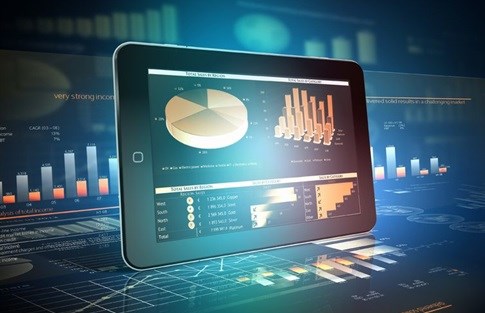We all want a greener, more sustainable world, yet the process of going green still seems to instil fear in some people. Good designers, on the other hand, embrace the move towards sustainability. Not only does green thinking lead to creativity and innovation, ultimately it's good for business, which to us means happy clients...
Take annual reports, for instance, which are both a legal requirement and an eco-nightmare. After all the work, money, paper and ink that go into printing them (not to mention all the printing of proof copies prior to the actual print run), they mostly end up in the bin. They have served nobody - neither client nor recipient nor environment.
A fine example of forward thinking when it comes to annual reports is Cape Town Tourism (CTT). In 2012 and 2013, the print runs of its annual reports, which were 52 pages each, were 120 each year. Half of those are now hiding in a basement, unused and unread. It was enough to prompt both CTT and us as their agency, to revisit the format of their annual report.
By 2014, both client and the Infestation design team were ready to go digital. But not just digital for digital's sake. From the beginning, mobile was identified as the technology that would make the user experience as easy as possible. Firstly, because most people do not read printed annual reports. Secondly, because many of CTT's stakeholders in the tourism/travel industry do not sit at desks and are always on the move.
The solution was to entertain and engage. Mobile is an easy-to-use platform without a lot of clicking required. Almost all data could be displayed on one page, making it easy to take in. Best of all, those boring letters from the top executives were brought to life through video, which everybody likes. They took the form of two minute video interviews with the Chairperson and the CEO. Throughout the report, the brand-based look was fully leveraged.
Importantly, the success in 2014 of CTT's first digital annual report was not just a green one. It was also a major marketing victory. For the first time ever, the client could get precise feedback about who was reading the report. Digital makes measurement of an annual report possible. Bounce rates, popularity of specific pages, how long readers spend per page, how many links clicked through: analytics tell you everything you could want to know. And this led to some excellent feedback: in the first nine months, the CTT annual report had 2590 views, including video and downloads.
Long-term cost savings are another win of digital annual reports. In Year 1 of a digital report, the costs are relatively the same as print, as the framework must be built and developed. But once a company enters Year 2, the cost savings kick in, as much less time is involved to create the report. There is no need to reinvent the wheel as there is with print reports: through digital, it is possible to keep the look fresh and interesting without significant changes to the framework.
While in the past, some companies have felt they needed both print and digital reports, this is becoming outdated thinking, as digital forges ahead at lightning speed. One intermediary step is an interactive PDF, which to a certain extent, can mimic an interactive environment. Our client, the Western Cape Economic Development Partnership (EDP) took a first step towards digital with its 2013 annual report, which was hosted on its website. It was a success that EDP repeated with its 2014 interactive PDF report.
Designers are responsible for conceptualising and producing things. The very nature of producing things means we play a major role in promoting consumption, and so we actually contribute to the problem rather than help solve it. Give a designer an open brief and we'll go wild, with our penchant for die cuts, beautiful paper and whimsical packaging!
In order to curb this, we need to think hard about how we design in future and design with as little impact to the environment as possible. It means we have to think about the whole lifespan of the product and not just how it's made or the materials with which it is made, whether we're talking about paper, ink or electronic devices. But the practise of becoming green starts now, and ironically, while people may think the designers are driving this evolution, the clients, sometimes even unknowingly, play a big role.
Here's how:
As designers love designing, they sometimes need boundaries. In walks the client, who is the ultimate boundary-setter. Together, with clear briefs, they can create beautiful earth-friendly solutions that also hit the marketing mark: for a beautiful design means nothing if nobody sees it. The best green projects are the ones that address more than the environment; they are also good for business.
Nobody likes waste, but it's most likely here to stay in some form. However, that doesn't mean we can't greatly minimise it. Designers have a responsibility to choose the materials and processes with the least amount of environmental and human impact. That doesn't only mean weighing up paper waste against e-waste - surprisingly, there isn't always a clear victor between the two. It means constantly doing research, opening our eyes and ears to new technologies and products, and learning about their implications. If we do our homework, we can make intelligent choices that are also good for clients' bottom lines and create amazing solutions to problems, with the lightest possible footprint.
















































